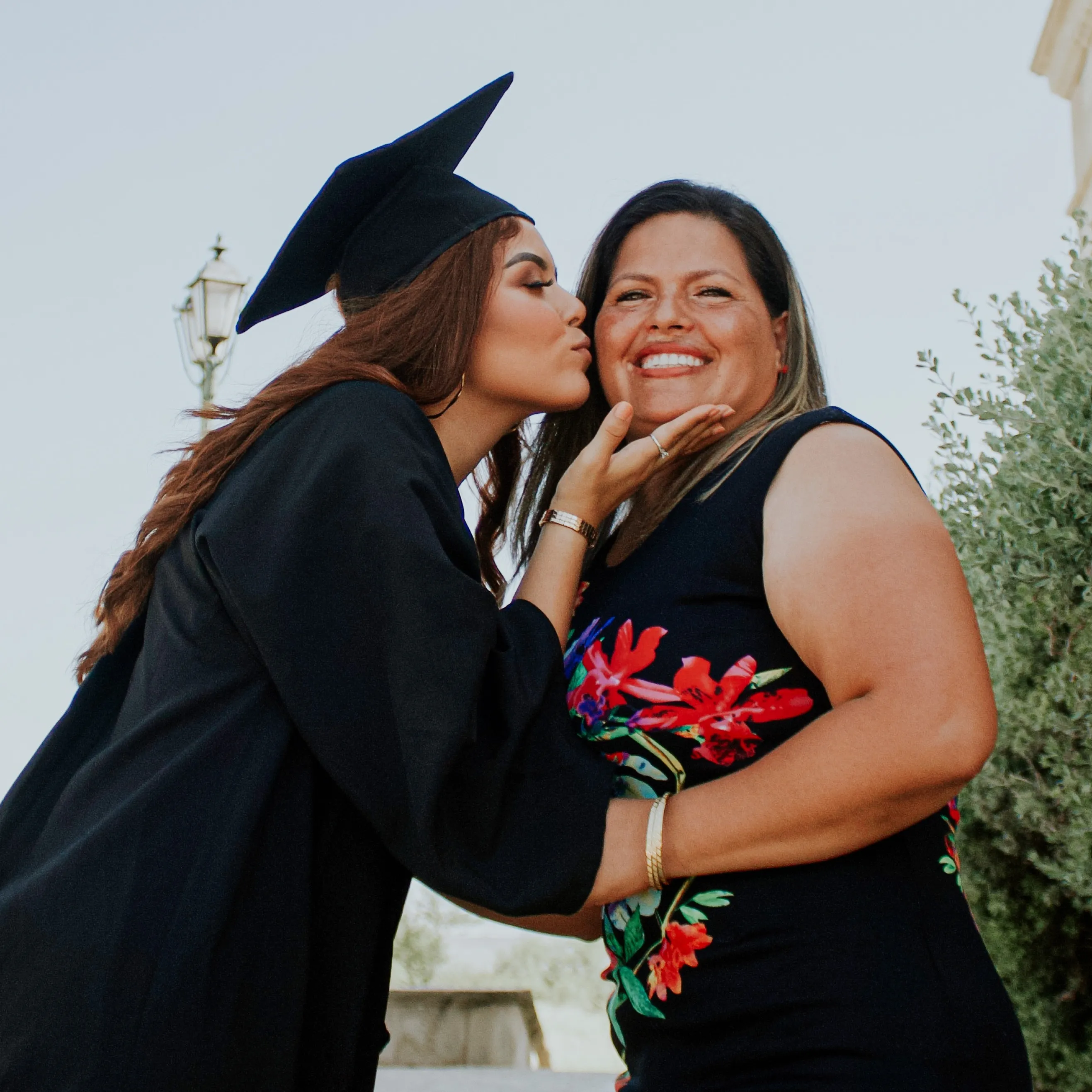From pep rallies to chemistry classes, school dances, and team sports, the high school years bring a mix of quintessential experiences. No matter how ideal these events sound, high schoolers have faced less than ideal learning situations as the COVID-19 pandemic spread rapidly. As all schools transitioned to virtual learning, schools and students are trying to regain their footing and catch up on missed in-person instruction.
However, schools have struggled to maintain smaller classes since returning to school. Surrounding this growing concern, the words 'classroom' size and ‘student-teacher ratios’ have become commonplace. But how are these metrics valuable? From individualized attention to hands-on learning and behavioral development, studies suggest that the benefits of smaller class sizes are far-reaching.
To clarify the effect class size and the student-teacher ratio has on your high schooler's education, this guide decodes what you need to know about these popular education terms.
Student to Teacher Ratios: At A Glance
- What is ‘Student-Teacher’ Ratio? This is a measurement of the number of students for every teacher employed by the school (Public School Review).
- What Is the Average Student-Teacher Ratio in the United States? The average student-to-faculty ratio in U.S. K-12 public schools is 15.3 students per teacher (National Center for Education Statistics).
- What is the Average Classroom Size in high schools? On average, high school classes are 17.7 students in self-contained classes and 24.2 students in classes that rotate for departmentalized instructors (National Center for Education Statistics).
- What are the Benefits of Smaller Class Sizes? The benefits of smaller classes in high school often lead to better academic achievement and improved gains for low-income and minority students (Lydian Academy).
- How to Supplement Your Child’s Education at Home? Some easy ways to support your high schooler’s learning include building a regular schedule, practicing healthy homework habits, and minimizing distractions.
What is ‘Student-Teacher’ Ratio?
The Glossary of Education Reform defines ‘student-teacher’ ratio as the number of students enrolled at a specific school compared to the number of full-time or full-time equivalent instructors. Calculating this metric is simple—divide your school’s total enrollment by the number of teachers. When you hear about an 18:1 student-teacher ratio, you know that there is one teacher for every 18 students enrolled at the school.
But why is this measurement important? Many researchers and education professionals rely on this number to evaluate the workload of each teacher and the allocation of school resources. This term has also migrated to politics and mainstream media when discussing students’ school experiences.
However, it’s important to note that lower student-teacher ratios are not an exact measurement of student experience or academic achievement. A school with a lower ratio may not evenly assign students to instructors resulting in some classes with a larger than average class size.
How Was Student Performance Affected by COVID-19?
When 2020 hit, so too did an unprecedented decline in student performance. Some of the repercussions of the COVID-19 pandemic ranged from severe faculty shortages, higher than average student-teacher ratios, higher absentee rates, declining mental health, and classroom misbehavior. A severe faculty shortage, increasing classroom demands, and unexpected stretches of virtual learning have all been contributing factors to this reality.
It was also amid COVID-19 that high school students began to supplement their education with tutoring outside of school. It comes as no surprise that 2020 marked the beginning of a massive growth trajectory in online learning. Services like Learner have only continued to increase in popularity; a recent study predicted that by 2026, the online tutoring market will have increased by $182.32 billion (Technavio).
What Is the Average Student-Teacher Ratio in the United States?
Across K-12 public schools in the U.S., the average student-teacher ratio is 15.3:1 (Brookings Institute). However, this ratio varies widely depending on the location, local education codes, and grade level. A great example is California, which has a higher student-teacher ratio than many states, at 22:1. By contrast, Maine’s average 11:1 student-teacher ratio is one of the lowest among all 50 states (Public School Review).
Some people are surprised to learn that there are no student-teacher ratio requirements at the federal level. Instead, these codes are established by the state, county, or local educational systems. For instance, Alabama’s state code requires an 18:1 ratio for all K-12 classrooms while Florida specifies no more than 25:1 (Public School Review). States like Colorado, Alaska, and New York do not specify a ratio cap for public schools in their education codes (Education Commission of the States).
What Is the Average Student-Teacher Ratio in high schools?
The average student-teacher ratio is 15 students per teacher across all K-12 grade levels in U.S. public schools. Remember, this metric compares the number of students at a high school to the number of full-time teachers or full-time equivalent teachers (think: substitutes, aides, teaching assistants). With this in mind, the average ratio expresses that for one teacher there are 15 students across all U.S. public schools.
Higher ratios generally suggest more students than full-time teachers, whereas lower student-teacher ratios suggest more opportunities for one-on-one attention. Even though the country's average student-teacher ratio is less than some states' class size mandates, there is still widespread concern about overcrowded classrooms (Brookings Institute).
What Is the Average Classroom Size in high schools?
The national average size of high school classes is 17.7 students per self-contained classroom. But when students are assigned a different class for each subject, the average high school class size jumps to 24.2 students.
For context, education researchers recommend an average class size of 20.5 or less in grades K-12 for the best quality education. Data suggests that this number gives teachers the bandwidth to provide individual attention for each student while facilitating a beneficial group environment (NCES).
How Is the Student-Teacher Ratio (STR) Different From Class Size?
Student-faculty ratio (STR) compares the number of enrolled students to the number of teachers across an entire school. Traditionally, education experts look at this metric to evaluate the approximate workload of each teacher and resource allocation across a school’s population.
Class size is more intuitive—this number reflects the exact number of students in a classroom, making it easier to determine. Though STR and class size are often interchangeable, education experts prefer looking at class size to better understand students’ education experiences.
If you’re wondering why the researchers don’t rely on STR as their primary data, know that this ratio does reflect the entire in-class experience. Simply put, lower STR ratios do not mean that a school evenly distributes its faculty across classrooms. Even if the school has a low STR of 10:1, some teachers may have a large classroom of 25 students whereas instructors with specific expertise may only have smaller groups of 9 students (Brookings Institute).
What Are the Benefits of Smaller Class Size?
Across the board, education experts agree that smaller class sizes are best for student achievement regardless of their background, learning development, and grade level. Here are some of the greatest gains of fewer students per classroom.
Improved test scores
Classrooms with 18 students or less often lead to higher test scores and long-term academic achievement. This data point stood out most significantly, especially since it argued that students placed in smaller classes early in their education will consistently out-perform their peers in a larger class (Brookings Institute).
Significant long-term gains for minority and low-income students
Smaller classrooms provide more individualized attention, which goes especially far for minority and low-income students. One study from 2007 revealed a strong correlation between small classes, an increased rate of students graduating on time, and a decrease in the drop-out rate (Class Size Matters).
Increased engagement and hands-on learning opportunities
Studies have continually linked small classes with increased student engagement, especially in urban high schools. With fewer students, teachers can provide more hands-on learning and engagement opportunities, both of which boost the child’s confidence, social skills, and material retention (Class Size Matters).
Improvements in student behavior
A 2008 study proved that small class sizes lead to better learning, increased focus, and a healthy classroom environment. Large class sizes were revealed to have more instances of misbehavior and less task-focused work. Small classes are easier to manage for a teacher and go far in improving the group’s social dynamic (Class Size Matters).
Which Students Benefit the Most From Lower Student-Teacher Ratios?
Though students of all backgrounds benefit from lower STRs, some high schoolers gain more benefits than others. Students from low-income households, students of minority groups, and those with learning challenges are shown to gain the most from lower ratios in high school classrooms.
Low-income
Numerous studies reveal a strong correlation between students from low-income homes and reduced average class size (Public School Review). The data shows how this student population is better equipped with the skills for long-term academic success when placed in a smaller environment. One of the key metrics is the sharp decline in high school drop-out rates when schools have smaller classes. 10% of kids from low-income homes drop out of school, making this group especially vulnerable to changes in class sizes (National Dropout Prevention Center).
Minority students
Data shows that students of a minority group exhibit higher graduation rates at schools with lower STRs (Class Size Matters). These smaller learning environments provide individual attention, encourage participation, and improve confidence among students from minority groups.
Students with learning challenges
In smaller classrooms, teachers can offer individual support to students with learning challenges or disabilities. Not only does the teacher and student develop a stronger relationship, but the instructor can better understand what helps each student effectively learn and the extra materials that are most helpful (Lydian Academy).
How to Supplement Your Child’s Education At Home
Even though your child may manage most of their coursework by now, there are still ways you can support their education at home. From online tutoring to distraction-free zones, here are four easy ways to support your high schooler’s academic success.
Build a daily school and homework schedule
A regular school and homework schedule is extremely helpful for high school students. Not only will this help them to prioritize homework regularly, but it will lay the groundwork for healthy habits. Of course, a balanced schedule doesn’t necessarily mean prioritizing work above all else—giving your child time to unwind before going to bed helps improve their mental health, and having nutritious foods in the house boosts energy levels and concentration (KidsHealth.org).
Provide help with studying
If your high schooler still asks for help or feedback on their assignments, your gut reaction may be to tell them whether they’re right or wrong, or that you’re not an expert in the subject! Instead, be willing to help your child by listening to their problem, asking clarifying, and providing basic feedback. One of the most helpful techniques is to allow your kids to explain their thought processes before jumping in to help (Public School Review).
Be serious about attendance
Taking a sick day from time to time is normal—in fact, it’s even healthy! However, attending school is one of the most important ways to ensure your child stays on top of lessons, assignments, and tests.
Skipping school regularly for mental health days may indicate that your kid is struggling with important underlying issues that need to be addressed (i.e. bullying, mental health, poor grades, etc.). By taking your child’s attendance seriously, you can ensure they are receiving the support they need (KidsHealth.org).
Find additional learning support
If your student is struggling in school, hiring a professional tutor may provide the additional help that your child needs. Some tutoring websites connect you to independent tutors for 300+ subjects whereas platforms like Learner are an easy way to be paired with world-class math, science, or ELA tutor.
What Parents and Students Are Saying About Learner
Learner is one of the most well-respected online tutoring services for high schoolers. From highly qualified math and STEM experts to ELA and test prep tutors, Learner provides an easy way to get quality academic support in the subjects you need.
This Learner customer said it best, “My daughter's confidence improved. Her test scores were already good but they are even better. More importantly? She can't wait for her sessions... She is teaching her teacher and classmates new ways to solve problems. She ASKS for extra sessions. And that is how you create lifelong learners.”
Why Trust Learner Tutors?
Learner is the most trusted platform for matching your child with an expert tutor. Here are some of the reasons why customers trust Learner tutors.
A custom-match math expert for everything you need to solve
Learner relies on an individualized approach to guarantee every student's success. The innovative platform asks all users to complete a one-minute assessment to learn about each student’s needs, learning style, personality, motivation, and other personal requirements. Then, the platform’s matching specialists hand-pick a math tutor, ELA tutor, or test-prep expert who can effectively provide the best academic support.
World-class tutors who are pedagogy experts
Learner tutors are the best in class. Unlike other tutoring services, each applicant experiences a rigorous selection process to select only the most qualified subject-matter experts. That's because Learner strives for excellence in their tutors, ensuring that each has extensive credentials and contagious enthusiasm for teaching. Learner's service rests on the belief that well-qualified pedagogy experts with excellent people skills have the power to engage and inspire the next generation of learners.
Tutors customize lesson plans at your own pace and deliver in your learning style
Students are empowered to learn at their own pace with Learner’s customized tutoring approach. A personalized lesson plan is developed for individual students so that sessions are guided by their unique strengths and learning style. Plus, Learner tutors continually modify their lesson plans to reflect how the student is progressing toward their goals.
Beyond the subject matter, Learner tutors help define trajectories after the passing grade
Some tutoring businesses focus only on the subject matter. At Learner, tutors work with students to identify and work towards long-term achievement. By providing a customized approach to learning that focuses on the student’s interests and motivation, Learner equips students with the curiosity, motivation, and skills for lifelong success.
Get Started with Learner Today
Learner can help connect you to the right tutor today. Star by visiting Learner.com to complete a one-minute assessment. This quiz gathers information on your learning style, personality, and motivation. After reviewing your responses, Learner’s team of academic advisors will contact you for a brief phone call to schedule your first session.
Frequently Asked Questions
There can be a lot of nuances and technicalities when understanding student-faculty ratios and class sizes. Here are some of the most frequently asked questions to help you better understand these terms.
What is the ideal teacher-student ratio?
Numerous experts have landed on 18:1 as the ideal student-teacher ratio. This ratio allows teachers to facilitate a healthy learning environment that provides individualized help. Lower ratio classrooms are also more task-focused, disciplined, and engaged (Public School Review).
Why does class size matter?
Class size benefits the teachers and students equally. With reduced class sizes, teacher workload decreases. Teachers then have the ability and time to work with students one-on-one and enforce classroom discipline. Data suggested that students learn more in these settings, as evidenced by higher test scores and long-term achievement (Brookings Institute).
Does reducing class size improve achievement?
Yes! Numerous studies have shown the positive effect of smaller classes on achievement. Compared to students in larger classes, students in small classrooms (especially those in smaller environments starting in the early grades) show more significant long-term gains, including lower drop-out rates and a higher likelihood of enrolling in college by age 20 (Brookings Institute).
What is the maximum class size?
It depends on the state. There is no maximum class size mandated for high school education at the federal level. However, 36 states have their state codes regarding classroom sizes. For example, Alabama caps its classrooms at 18 students per teacher for all grade levels (Education Commission of the States).
How do you calculate the student-teacher ratio?
The math is simple—divide the total number of enrolled students enrolled by the total number of teachers o(r full-time equivalent faculty) at a school. Your answer will be the student-teacher ratio or how many students per teacher at the organization. Higher student-teacher ratios suggest that class sizes will be larger, whereas a low ratio points to fewer students per class.









